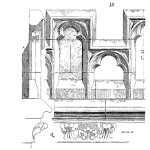At first glance, a computerized maintenance management system (CMMS) and Failure Modes And Effects Analysis (FMEA) may appear to be worlds apart. But take a deeper dive, and it’s easy to see that they both share a common component: data. The core of any CMMS is defined by gigabytes of data that guarantee its usefulness and functionality, while the success of the systematic steps in FMEA depends on good quality data.
Articles
Find all articles across all article series listed in reverse chronological order.
Myth Busting 21: Are manufacturer’s warranties worth it?

Many believe strongly in the value of warranties on new / refurbished equipment. They go to great lengths talking about how important it is to do the manufacturer’s recommended maintenance to maintain validity of the warranty. This is a continuation of the last blog article on having too many failures despite following manufacturer’s recommendations. Manufacturer’s usually recommend maintenance and spare parts for their products. In our last blog we can see that those recommendations are often flawed. So what about their warranty? [Read more…]
Pandemic. Pandemonium. Risk Management

Guest Post by Malcolm Peart (first posted on CERM ® RISK INSIGHTS – reposted here with permission)
COVID-19 is now among the ranks of The Black Death, Spanish ‘Flu, and SARS. Another submicroscopic demon is attacking humanity and bringing the mankind of this Information Age to its knees both physically and economically despite its insignificant size.
Viruses have been around longer than man and, when we become part of a future paleaontological record, they will still be plaguing whatever species takes over from us.
We also live alongside other virulent diseases that continue to plague the world. In 2018, TB affected 25% of the world’s population and caused some 1.5 million deaths while malaria affected 220 million people causing another 405,000 deaths. In addition, HIV/AIDS and other diseases such as measles, cholera, and typhoid contribute to the millions of deaths annually. Starvation, while not a disease, decimated mankind at an estimated rate of 21,000 per day in 2019. [Read more…]
Reliability Centered Maintenance (RCM) vs Preventive Maintenance Optimization (PMO)

Have you ever wondered? In this video I explain the differences between Reliability Centered Maintenance (RCM) and Preventive Maintenance Optimization (PMO). [Read more…]
5 Steps to Securing Commitment for a Transformer Reliability Program

by Alan Ross
When you start to put a risk and reliability program together for high voltage electrical equipment—primarily transformers—you have to go through a cultural change. I’ve seen it repeatedly, both in the industrial marketplace and the utility marketplace.
It’s never a one-person decision. [Read more…]
The 4 Physical Failure Mechanisms of Component Failure: The Basics (Part 1)

This article is directed at those ‘first responders’ who arrive immediately at the failure scene. These are the people who have to ensure the area is safe, preserve the scene for investigators and contribute to a plan to expedite a quick, safe return to production norms.
Many do not understand how valuable failed parts are to the metallurgical/forensic investigators. Broken parts are to metallurgists’, like the murder weapon is to a forensic crime investigator.
This article is meant to educate those that have access to the failed parts first, as to why they should preserve them in their failed state (not cleaning them up). We want to give them enough knowledge to be dangerous and raise their curiosity as to making a call on the fracture patterns they see. [Read more…]
The Problems with Payback Period, Part 1

If you’ve ever participated on a project team considering the purchase of a major piece of equipment, you’ve almost certainly heard of “Payback Period” – the length of time projected to recoup an initial investment through cost savings, increase profits, etc. It’s fairly simple to calculate: [Read more…]
Myth Busting 20: We must follow manufacturer’s recommended maintenance

Manufacturers always publish recommended maintenance for users of their products. There are a few myths about this maintenance – one is that it will result in reliable operation of the equipment. In some cases it does, but in most, it does not. Why? [Read more…]
Never Let a Serious Crisis Go to Waste

Guest Post by Joseph Paris (first posted on CERM ® RISK INSIGHTS – reposted here with permission)
In an interview with the Wall Street Journal on November 19 ,2008, Rahm Emanuel was quoted as saying; “You never want a serious crisis to go to waste. And what I mean by that [is] it’s an opportunity to do things that you think you could not before.”
He was referring to the crisis that was to become known as the “Great Recession” that gripped much of the world, hitting hardest from 2007-2008. It was a period when millions of people lost their homes to foreclosure, nearly countless businesses declared bankruptcy; many being household names such as General Motors and Chrysler – along with a great number of financial institutions. [Read more…]
Should They Have the Right?

There is an issue up for vote this year in my home state of Massachusetts. It’s called “Right to Repair.” The proposed law states that automotive manufacturers can not lock owners and independent repair shops out of vehicles on-board diagnostic computers. These are the arguments on either side of the issue:
Auto manufacturers don’t want independent repair shops completing work on their vehicles with technicians who are not factory trained. They are also concerned about repairs being completed with non-factory parts that could potentially be sub-standard. These manufacturers believe they should have control regarding repairs because they are held responsible when issues occur under warranty. So why is this an issue now?
Is Maintenance considered a “Profit Center” or a “Cost Center?”

If you think it’s expensive to figure out what kind of scheduled maintenance you should be doing on your equipment….wait until you get the bill for NOT doing it! Check out how Shakespeare inspired me on this one! [Read more…]
What Managers May Not Know About Root Cause Analysis (RCA)

Guest post by Mark Latino
If managers knew what the overall power of a well supported Root Cause Analysis (RCA) effort meant for their bottom-line, they would be breaking down doors to implement the process.
Unfortunately, this is often not the case, so this paper is an attempt to educate such individuals about the characteristics of an effective RCA methodology. The paper focuses on three aspects of RCA:
- What is RCA?
- What it takes to implement an effective RCA process as a way of conducting business rather than a finite ‘program’ that will eventually end
- How does RCA contribute to a company’s bottom-line? [Read more…]
Myth Busting 19: High performing organizations spend too much…

These days everyone seems to be cutting spending. It’s entirely discretionary, so it’s easy to eliminate. But is that a smart move?
But today, times are tough. Trade wars, protectionism, and generally sluggish economies before those were a factor have all contributed to poor corporate performance. Shareholders want more. But can you really cut costs to become profitable? No – of course not, at least not in the long term. Cost cutting, if not done intelligently, is an immediate measure that often ends up reducing capability and / or capacity and leaves the organization weaker than it was before. [Read more…]
ASQ Story: Coronavirus Forces Organizations to Adapt Business Models

Guest Post by James Kline (first posted on CERM ® RISK INSIGHTS – reposted here with permission)
As readers of my pieces know, there are concerns about how ASQ is being managed. These concerns have caused a split among the membership. Some hold fast and support corporate management, while others want changes. This piece is the result of a question and an exchange on the LinkedIn Restore ASQ community.
The original discussion question on Linkedin was: ‘Why didn’t the risk analysts see the pandemic coming’? The exchange quickly devolved into those who felt that the disbanding of some ASQ Chapters is the fault of chapter members, not corporate and those who place ASQ’s troubles on corporate management. Considering the Coronavirus is forcing everyone to review assumptions, associations, and business models, it is worth visiting these issues. [Read more…]
Neither snow nor rain nor…okay…just wind…but it still didn’t stop me from talking about RCM.

Functions is the first step in the RCM process and they serve as the foundation of the RCM process. Properly written Functions serve two very important aspects of asset management. [Read more…]
- « Previous Page
- 1
- …
- 141
- 142
- 143
- 144
- 145
- …
- 270
- Next Page »